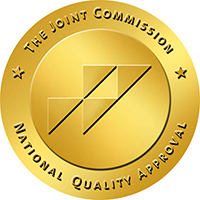Acute Stress Disorder

About Acute Stress Disorder
Acute stress disorder occurs in a person who has witnessed or been a part of a traumatizing life event, such as a natural disaster, an accident, physical or sexual assault, sudden death of a loved one or in reaction to receiving a life-threatening diagnosis.
If symptoms of Acute Stress Disorder persist for longer than 30 days, it may then be diagnosed as Post-Traumatic Stress Disorder (PTSD). It is important to note that not all people diagnosed with Acute Stress Disorder will develop PTSD.
Symptoms of Acute Stress Disorder:
Stress hormones released during the traumatizing event and overactivity of the nervous system cause symptoms the following to occur:
- Flashbacks to the traumatizing incident accompanied by physical signs of distress, like heart palpitations, shortness of breath and anxiety
- Difficulty remembering or blocking out certain parts of the incident
- Sleep disturbances and nightmares, especially reliving the incident
- Difficulty concentrating
- Increased irritability
- Nausea and stomach pain
- Headaches
- Generally low mood and inability feeling or expressing positive emotions
Why There Is Hope for Acute Stress Disorder
Acute Stress Disorder is considered a short-term condition and many people recover from the disorder without treatment at all. Some people, however, benefit from early detection and a treatment plan that includes therapy and, in very few cases, short-term medication.
Helping A Loved One with Acute Stress Disorder and Early Intervention
Acute Stress Disorder symptoms develop immediately after the traumatizing event and can last between three and thirty days. An individual cannot self-diagnose Acute Stress Disorder. If the individual has experienced a traumatizing event and thinks they may be at risk for Acute Stress Disorder, it’s important they seek a healthcare practitioner for an objective evaluation. It’s important for adults to look out for younger loved ones after something life-threatening has happened or a sudden loss has occurred. Tragedy affects every person differently and younger family members may need support getting the help they need after the event. Children are less likely to self-report. Caregivers should be on the lookout for child-specific signs of distress, including repeated enactment of the traumatic incident during playtime, detachment, difficulty sleeping and irritability after the incident has occured. If a parent or caregiver suspects a child might be showing signs of Acute Stress Disorder, they should contact a doctor right away. Although Solstice Pacific does not treat children in groups or day treatment, we do treat families and are pleased to help you with outpatient appointments for children here in our South County integrative psychiatric clinic.
How We Treat Acute Stress Disorder
Many cases of Acute Stress Disorder recover without treatment, but severe and persistent symptoms may require play therapy, Dialectical Behavioral Therapy or, trauma-focused cognitive behavioral therapy (TFCBT) to prevent the individual from developing PTSD. TFCBT helps people understand, identify and reconstruct unhealthy thought patterns associated with the trauma. Where play therapy helps to express emotions with less words.
What Ongoing Care Looks Like for Acute Stress Disorder
Once a person diagnosed with acute stress disorder engages treatment, it’s important to continue services until they feel safe. Continuing care helps the person learn how to manage their thoughts and emotions around trauma and how to cope when future crises arise. Life’s stress is certain. But, with the right care, more stress does not necessarily lead to more disorder or disease. With time, individuals can lean their full weight on coping skills. With time, dysregulating or maladaptive behaviors and thoughts are replaced by self-affirming, family-affirming habits and cycles.
Symptoms of Acute Stress Disorder:
Stress hormones released during the traumatizing event and overactivity of the nervous system cause symptoms the following to occur:
- Flashbacks to the traumatizing incident accompanied by physical signs of distress, like heart palpitations, shortness of breath and anxiety
- Difficulty remembering or blocking out certain parts of the incident
- Sleep disturbances and nightmares, especially reliving the incident
- Difficulty concentrating
- Increased irritability
- Nausea and stomach pain
- Headaches
- Generally low mood and inability feeling or expressing positive emotions




